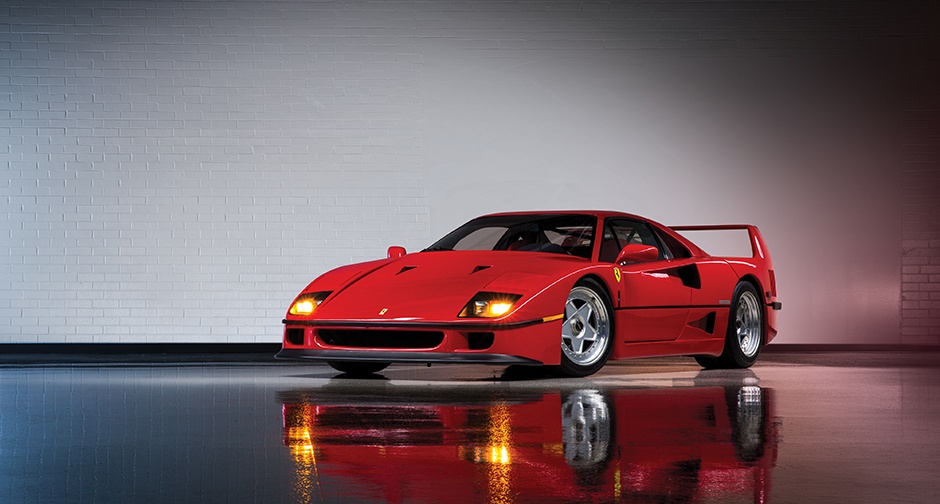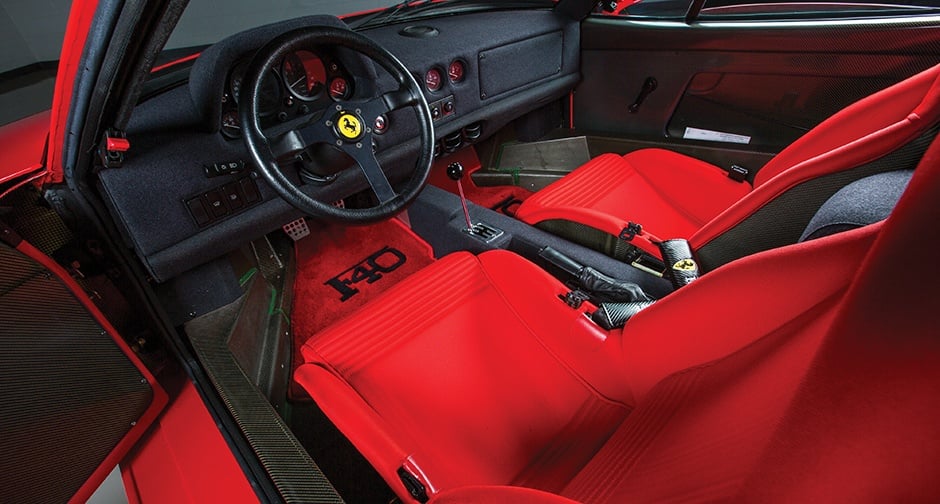Designed for speed

For Pininfarina designer Leonardo Fioravanti, a personal invitation from Enzo Ferrari himself to visit the factory saw him come face to face with the F40’s precursor, the snarling 288 GTO Evoluzione. “When il Commendatore asked for my opinion on this experimental prototype, which, due to regulatory issues, never went into production, I didn't hide my enthusiasm as an amateur driver for the incredible acceleration of its 650hp. It was then that he first talked to me about his desire to produce a ‘true Ferrari’. We knew, as he knew, that it would be his last car. We threw ourselves headlong into the work. Extensive research at the wind tunnel went into aerodynamic optimisation, to achieve coefficients appropriate for the most powerful Ferrari road car ever. Its style matches its performance — the low bonnet with a very tiny overhang, the NACA air vents, and the rear spoiler, which my colleague Aldo Brovarone placed at right angles, made it famous. If I had to point out one overriding reason for the success of the F40, I would say that its line succeeded in instantly transmitting the exceptionality of its technical content: speed, lightness, and performance.”
Taming the beast

Dario Benuzzi, Ferrari’s test driver at the time, was behind the wheel from the start of the F40’s journey into production. “The handling of the first prototypes was poor. To tame the power of the engine and make it compatible with a road model, we needed to subject every aspect of the car to countless tests — from the turbochargers and braking system to the shock absorbers and the tyres. The result was an excellent aerodynamic load and high stability even at high speed. Another important aspect was the tubular steel frame with Kevlar reinforcement panels, which provided three times more torsional rigidity than that of other cars of the period, as well as the bodywork, made mainly of composite materials, which reduced weight to just 1,100kg. We obtained precisely the car we wanted, with few comforts and no compromises. With no power steering, power brakes, or electronic devices, it demands the skill and commitment of the driver but generously repays them with a unique driving experience. Steering precision, road holding, braking power, and intensity of acceleration reached unmatched levels for a road car.”
Special from the start

Ermanno Bonfiglioli, head of special projects at Ferrari, recalls the launch day as an event like no other. “I’ve never experienced a presentation like that of the F40. When the car was unveiled, a buzz passed through the room, followed by thunderous applause. No one, except for close associates of Enzo Ferrari, had yet seen it. Indeed, the company had cloaked the development and testing of that car in unusual secrecy. And the surprise at such a stylistic leap was almost a shock. The timeframe was also unusual — within the very short arc of 13 months, the chassis and bodywork moved ahead quickly, at the same pace as the powertrain. It was June 1986 when we began designing the engine of the project F 120 A. The eight-cylinder, 478hp twin-turbo was a derivative of the 288 GTO Evoluzione’s, but a number of innovative contents enabled the F40 to become the first production Ferrari to exceed 320km/h. We paid maximum attention to the weight of the engine, thanks also to the extensive use of magnesium. The oil sump, cylinder-head covers, intake manifolds, and gearbox bell-housing were made out of this material that cost five times as much as aluminium alloy and such quantities have never been used in subsequent production cars. This is just a small example of this car's ‘difference’.”
As Ferrari continues to celebrate its 70th anniversary in true Italian style, it’s recollections such as these, of just one of the iconic machines born from Maranello, that contribute to Ferrari’s hard-earned place in the hearts and minds of generations. Long live Ferrari, and long live the F40…Photos: RM Sotheby’s






